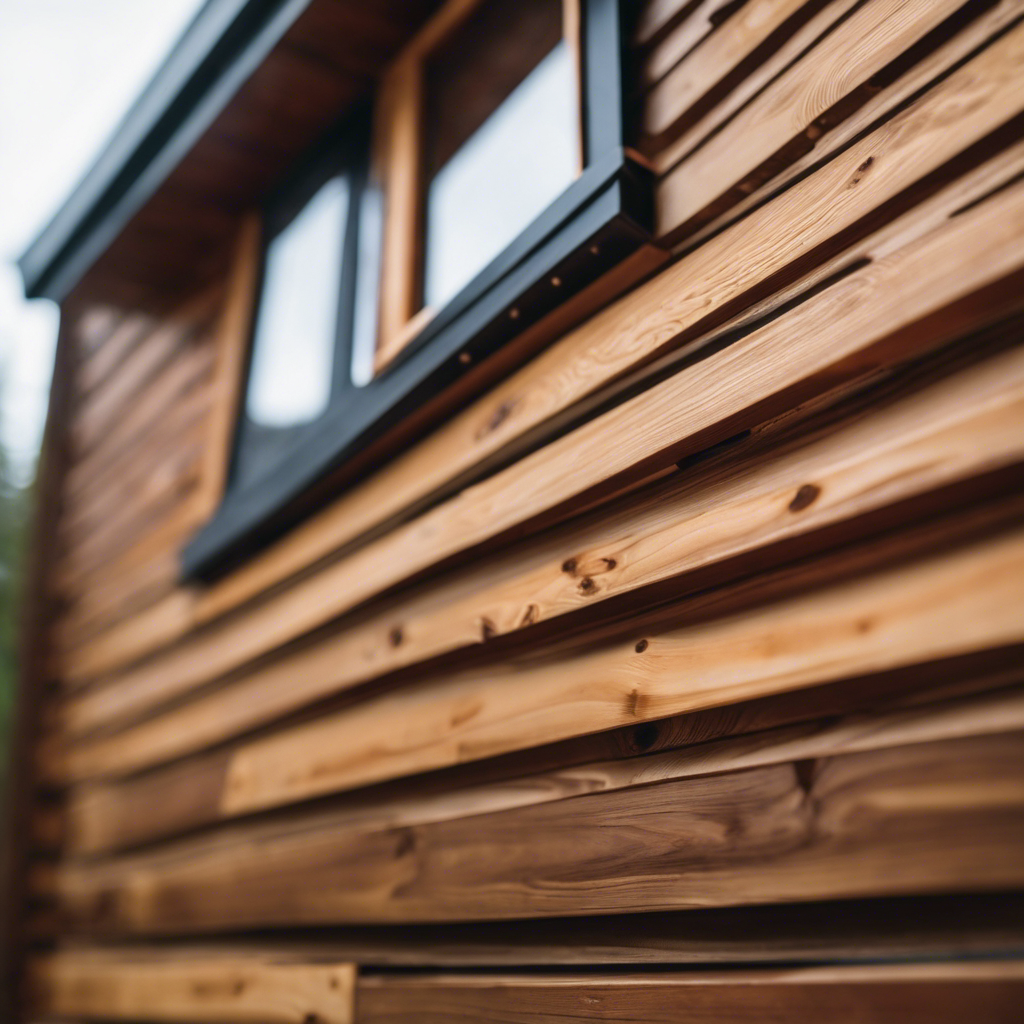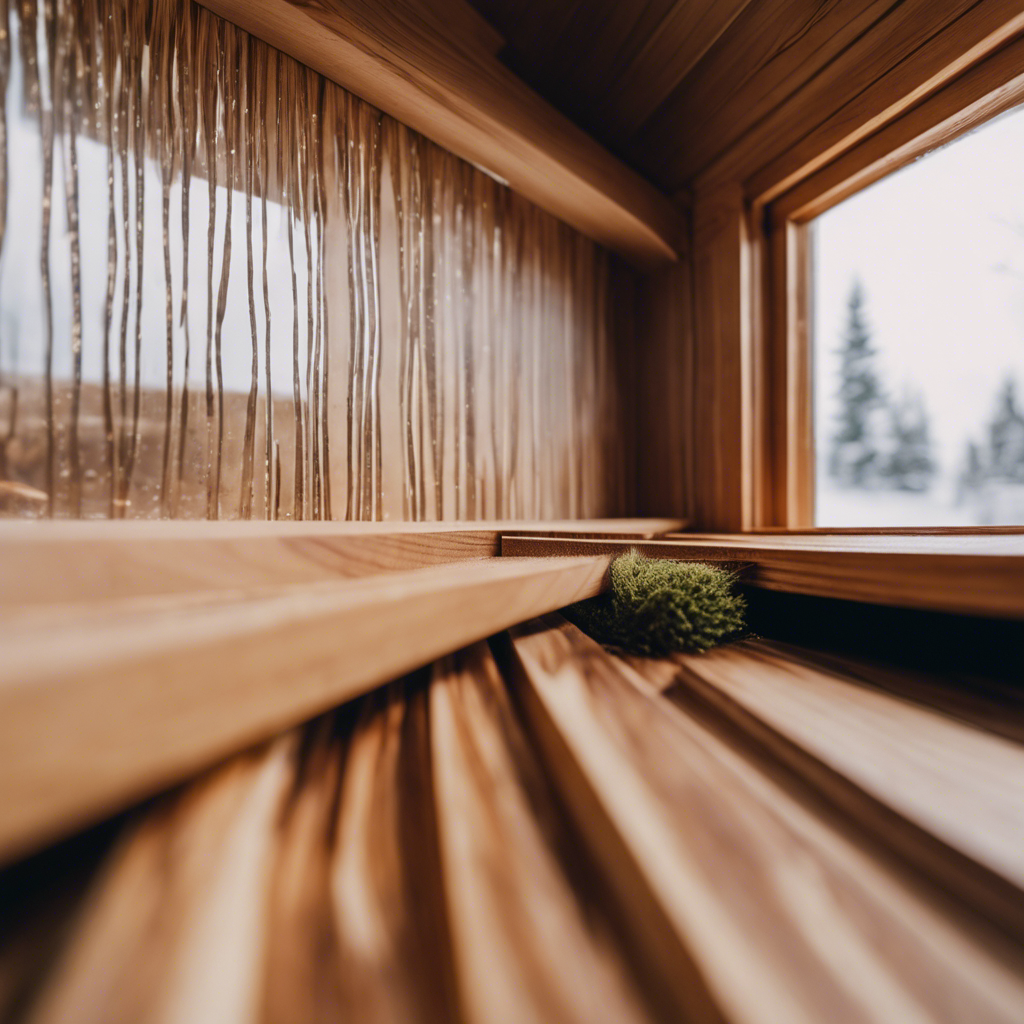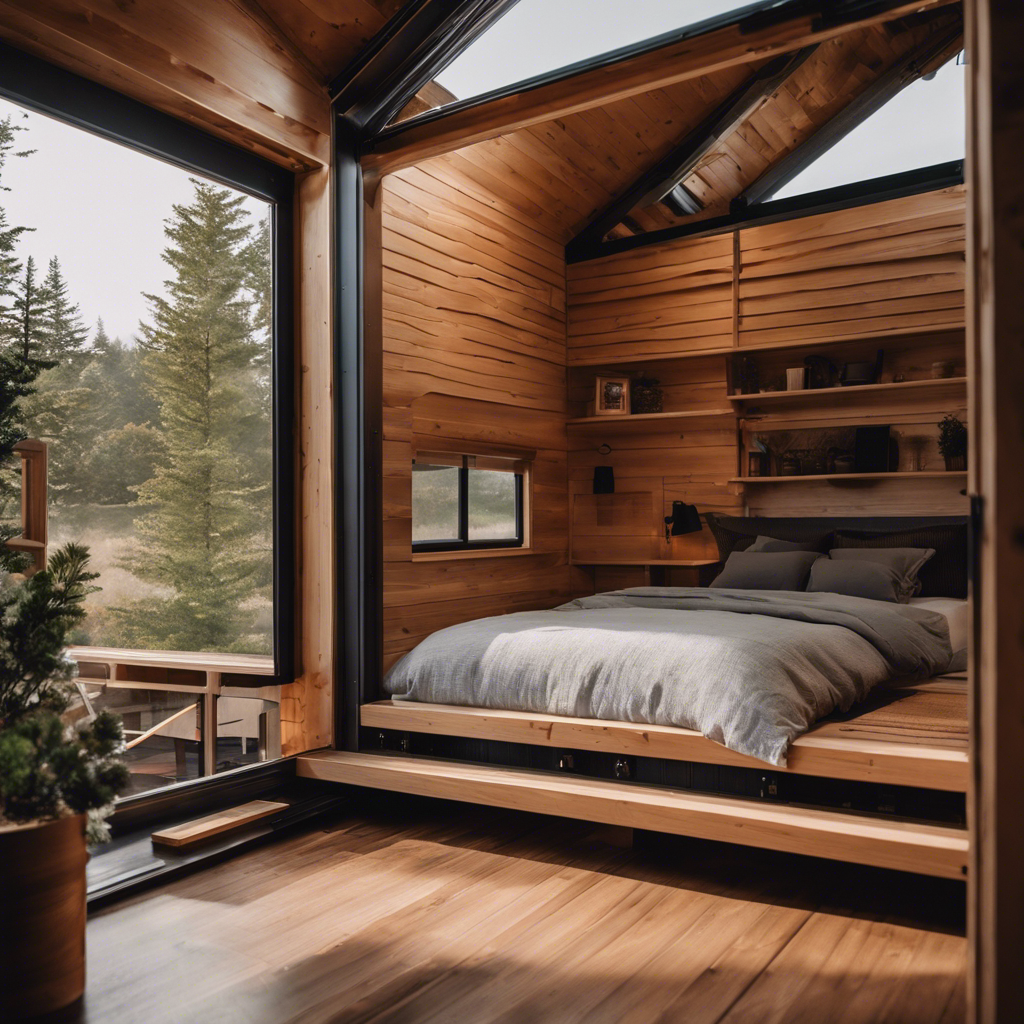As the proud owner of a wooden tiny house, I’ve always been fascinated by the allure of wooden walls. Yet, I couldn’t shake the mystery of occasional dampness despite my mini split and dehumidifier.
Determined to solve the puzzle, I embarked on a journey into the realm of moisture in wooden walls. In this article, I’ll share the secrets I uncovered, from the natural properties of wood to external factors like humidity.
Join me as we unravel the mystery and master the art of a cozy, moisture-free living space.
The Importance of Moisture Regulation in Wooden Tiny House Walls

I have learned that proper moisture regulation is crucial in wooden tiny house walls to maintain a normal humidity level and prevent moisture-related issues. Moisture management techniques are essential to ensure that the wooden walls can effectively absorb and release moisture.
Temperature also plays a significant role in moisture levels. Fluctuations in temperature can cause condensation on the walls, leading to mold and mildew growth. It’s important to monitor and control the temperature inside the tiny house to minimize the impact on moisture levels. Using insulation can help regulate temperature and prevent excessive moisture accumulation.
Additionally, proper ventilation and airflow are key in preventing moisture buildup. By implementing these moisture management techniques and being mindful of the impact of temperature, one can maintain a healthy and comfortable environment inside a wooden tiny house.
Understanding the Natural Moisture Absorption and Release Process

The natural moisture absorption and release process in wooden walls is a fascinating phenomenon that helps maintain a healthy and balanced humidity level in my tiny house. However, I’ve come to realize that high humidity can have a significant impact on the wooden walls of my home. Excessive moisture can lead to the buildup of mold, rot, and other moisture-related issues.
To prevent this, I’ve implemented various techniques to prevent moisture buildup in my wooden tiny house walls. Firstly, I ensure proper ventilation by opening windows and using exhaust fans in areas prone to moisture, such as the kitchen and bathroom. Additionally, I use dehumidifiers and air conditioners to control the humidity levels inside the house.
Regular maintenance, such as checking for leaks and repairing any damaged areas, is also crucial in preventing moisture-related problems. By employing these techniques, I can ensure the longevity and health of my wooden walls in my tiny house.
Factors Affecting Moisture Levels in Wooden Tiny House Walls

One factor that significantly impacts moisture levels in wooden tiny house walls is the number of windows and doors left open, allowing humid air to enter and affect the wood’s moisture content.
Proper moisture control techniques are essential to maintain the integrity of wooden walls.
Monitoring and regulating the temperature inside the tiny house can help control moisture levels.
Fluctuations in temperature can cause moisture to condense on the walls, leading to potential damage over time.
By implementing moisture control techniques and being mindful of the impact of temperature on moisture levels, we can ensure the longevity and durability of our wooden tiny house walls.
This includes proper ventilation, using dehumidifiers when necessary, and sealing any gaps or cracks that may allow excess moisture to enter.
Additionally, maintaining a stable indoor temperature can help prevent condensation and minimize the risk of moisture-related issues.
The Role of Mini Splits in Moisture Control for Wooden Walls

Installing mini splits in wooden walls provides effective moisture control, ensuring the longevity and durability of the structure.
Mini split installation is crucial for maintaining optimal humidity control in wooden walls. These HVAC systems have the ability to remove excess moisture from the air, preventing issues such as mold growth and rotting of the wood.
By controlling the humidity levels, mini splits help to preserve the integrity of the wooden walls and prevent any potential damage caused by excessive moisture.
With their advanced technology, mini splits ensure a comfortable and healthy indoor environment while also protecting the structural integrity of the wooden walls.
Therefore, when considering the installation of mini splits in a tiny house with wooden walls, it’s essential to prioritize humidity control for the longevity and durability of the structure.
Tips for Maintaining Optimal Moisture Balance in Wooden Tiny House Walls

To effectively maintain optimal moisture balance in my wooden tiny house walls, I need to implement practical tips and utilize proper maintenance techniques. Here are some key strategies to prevent mold growth and manage humidity levels:
- Monitor and control indoor humidity levels using a hygrometer.
- Ensure proper ventilation by opening windows and using exhaust fans.
- Install a dehumidifier to remove excess moisture from the air.
- Regularly inspect and repair any leaks or water damage in the walls.
- Use mold-resistant paint or coatings on the interior walls.
- Avoid overwatering indoor plants, as they can increase humidity.
- Keep furniture and belongings away from the walls to promote airflow.
Exploring Alternatives: Considerations for Non-Wooden Interior Wall Materials

I have been researching different interior wall materials, such as gypsum board and concrete, to consider their advantages and drawbacks for my tiny house.
One alternative that has caught my attention is birch plywood. Birch plywood offers versatility in appearance and finishes, allowing me to achieve the aesthetic I desire for my tiny house. Additionally, it’s known for its durability and strength, making it a reliable choice for interior walls.
However, I’m also considering the insulation options for these materials. Insulation plays a crucial role in maintaining a comfortable indoor environment and enhancing energy efficiency. Therefore, I’ll need to carefully evaluate the insulation properties of birch plywood and compare them to other materials to make an informed decision.
Ultimately, selecting the right interior wall material and insulation option will be vital in ensuring the overall comfort and efficiency of my tiny house.
Frequently Asked Questions
How Do I Prevent Moisture-Related Issues in My Wooden Tiny House Walls?
To prevent moisture-related issues in my wooden tiny house walls, I should focus on preventing condensation and properly insulating the walls. This will help maintain optimal humidity levels and protect against mold and rot.
What Are Some Non-Wooden Interior Wall Materials That I Can Consider for My Tiny House?
Alternative materials for tiny house interior walls include birch plywood and painted drywall. Pros of plywood include versatility and finishes, while painted drywall offers a smooth and customizable surface. Cost and installation process vary depending on the chosen material.
Can Painting the Interior of Wood Walls Affect Their Ability to Regulate Moisture?
Painting the interior of wood walls can hinder their ability to regulate moisture. Proper ventilation is important in wooden tiny houses to prevent moisture buildup. Humidity can have a significant impact on wood walls, so it’s crucial to consider these factors when designing and maintaining a tiny house.
How Long Does It Typically Take for Wooden Walls to Equalize Their Moisture Content With the Surrounding Air?
Wooden walls in a tiny house are like a natural sponge, absorbing and releasing moisture to maintain optimal humidity levels. It typically takes about 3 weeks for the walls to equalize their moisture content with the surrounding air.
What Are Some Energy-Efficient Options for Cooking and Providing Hot Water in a Tiny House?
Energy efficient cooking methods in a tiny house include induction cooking. For hot water, consider a tankless water heater, which saves space and is efficient. These options optimize energy usage and are suitable for tiny house living.
Conclusion
In conclusion, delving into the world of wooden walls and moisture regulation has been an eye-opening journey. Like a hidden river flowing beneath the surface, the secrets of moisture in wooden tiny house walls have been unveiled.
By understanding the natural breathing properties of wood, considering external factors, and utilizing tools like mini splits, we can maintain an optimal moisture balance in our tiny homes.
Let’s embrace these secrets and create cozy, moisture-free living spaces that truly reflect the charm and beauty of wooden walls.


